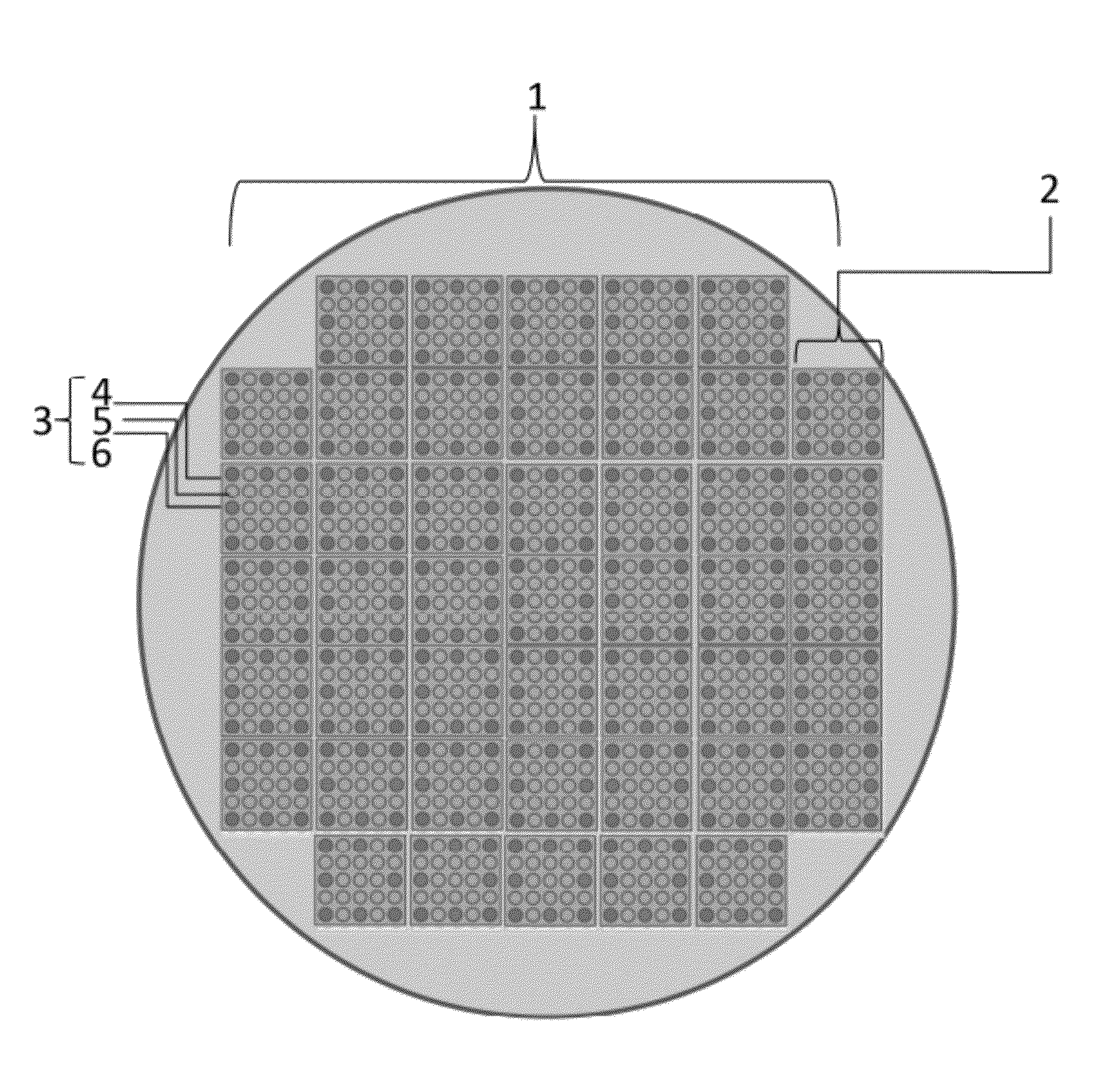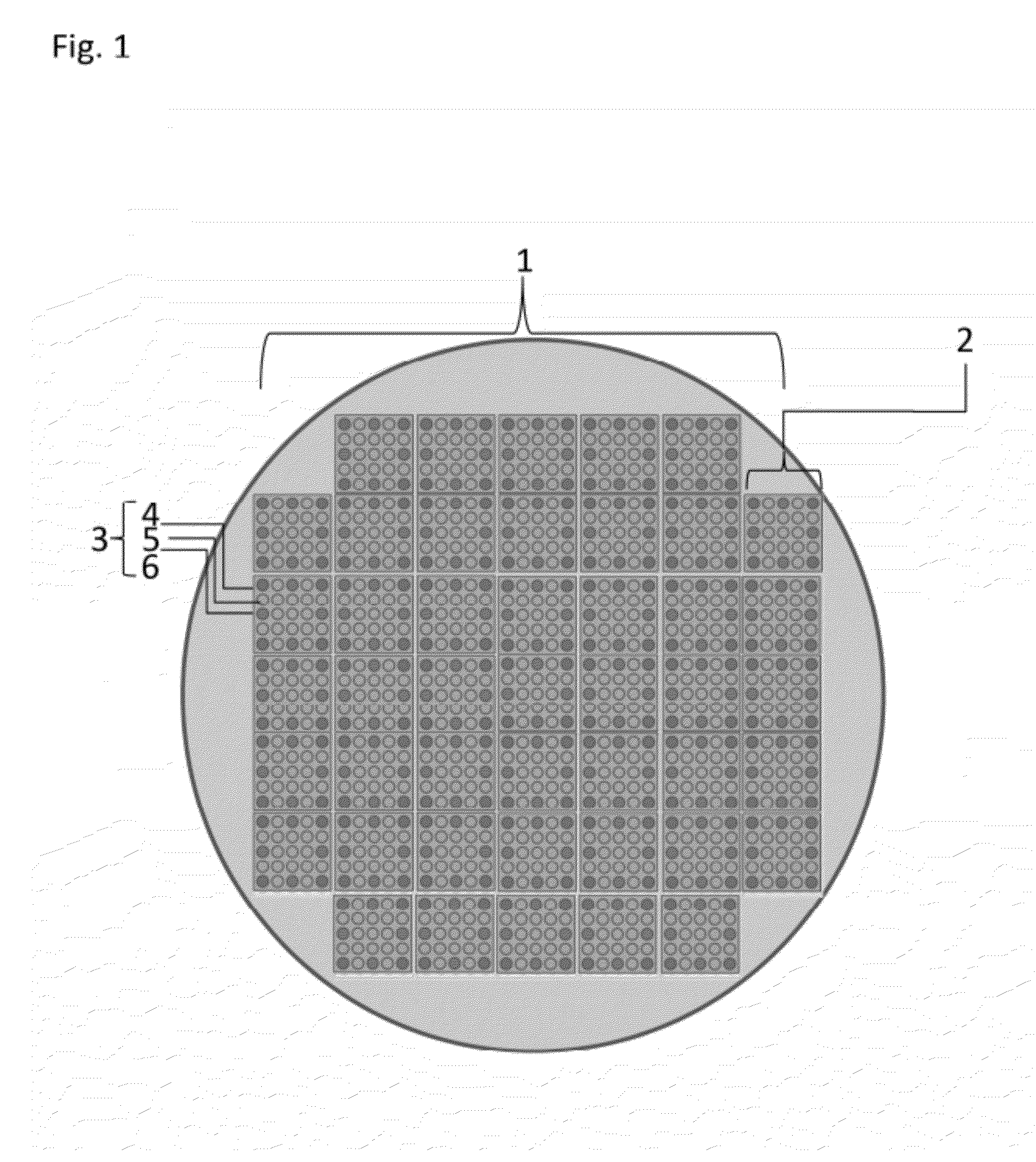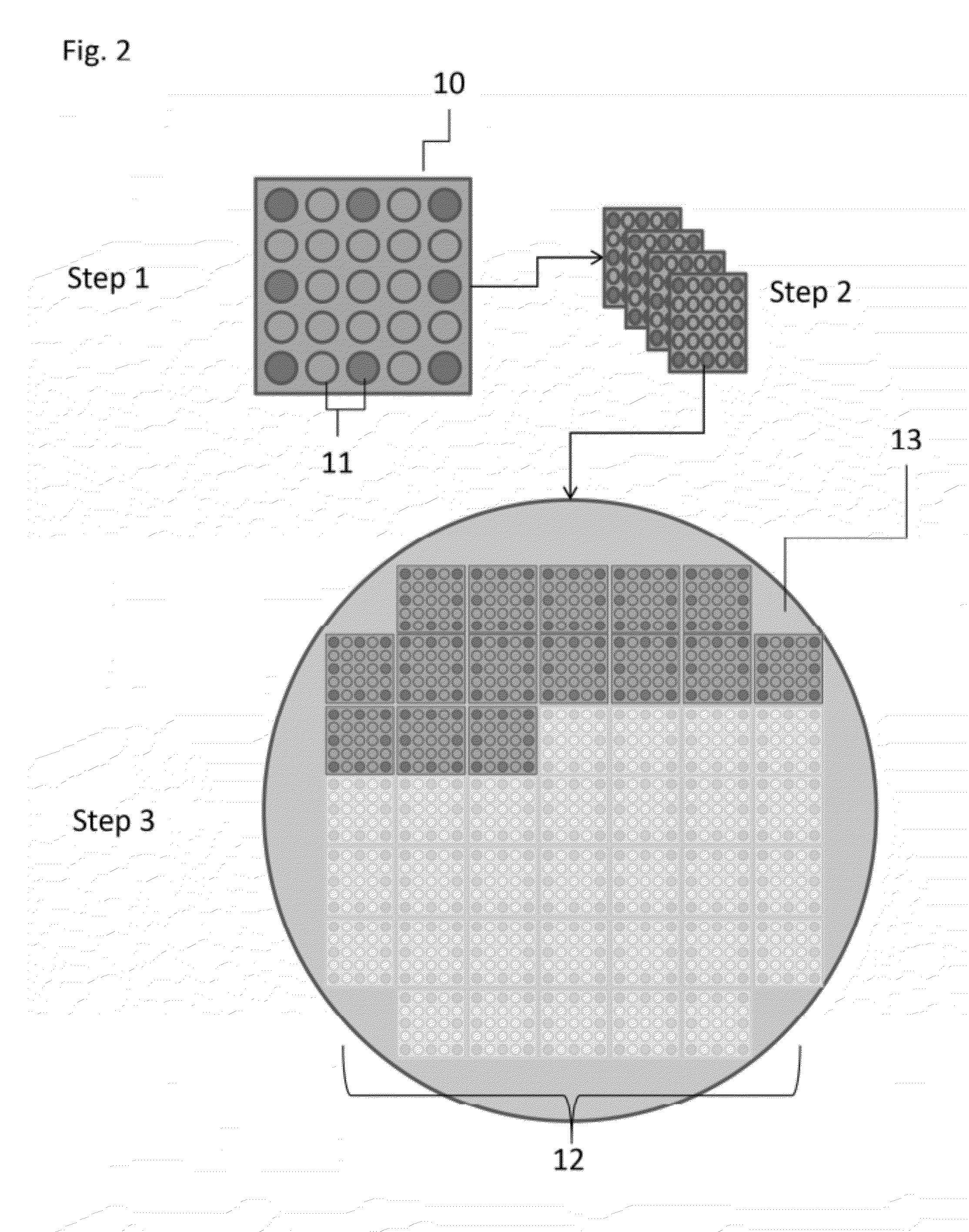Fabrication process for mastering imaging lens arrays
a technology of imaging lens array and fabrication process, which is applied in the field of fabrication process for mastering large imaging lens array, can solve the problems of wavefront errors, inability to use such techniques for fabricating imaging lenses, and difficulty in ensuring proper quality control using these standard techniques
- Summary
- Abstract
- Description
- Claims
- Application Information
AI Technical Summary
Benefits of technology
Problems solved by technology
Method used
Image
Examples
first embodiment
[0030]the invention is shown schematically in FIG. 2. In this embodiment, a sub-array (10) of individual lens elements (11) is formed first and then this sub-array is duplicated across the entire substrate wafer (12) to form the final waferscale lens array (13). More specifically, in a first step each of the lens elements (11) in a sub-array (10), in this case an array of 5×5 individual lens elements, is formed via a conventional manufacturing technique, such as, for example, diamond turning. In a second step this sub-array (10) is quality checked to ensure that each of the individual lens elements has been produced with the correct surface profile and has been positioned properly in relation to the other lens elements. In step 3, once the sub-array has been checked, it is then used as a master to reproduce identical copies of the sub-array across the entire substrate to form the full master array (13). In this embodiment, because the requirement for xy-precision is shifted to that ...
second embodiment
[0032]In a second embodiment, shown schematically in FIG. 3, individual master lens pins are formed. The lens pins can be either single lens elements (20), each having different surface profiles, or small arrays of lens pins (21 to 23) having the same surface profiles. (Step 1) Then, in a second step, these master lens pins are repeatedly used to manufacture the desired lens profile at the right position on the wafer (i.e., in the correct channel of a particular later camera array). Once all the lenses of a first lens pin are reproduced on the entire master array (24) (e.g., for the embodiment shown, 4 times for each sub-array on the wafer), then the pin would be changed and a second lens pin would be used to reproduce all the lenses of the second lens profile, and so on.
[0033]The advantage of this method is that all lenses intended to be identical are identical since they come from the same master pin. Moreover, this pin can be quality checked and iterated in the diamond turning ma...
third embodiment
[0034]the invention (shown schematically in FIG. 4) combines the two approaches set forth above to form a hybrid technique that takes advantage of quality control aspects of both of the earlier fabrication techniques. Specifically, in a first step of this process each of the different lens profiles (30 to 32) would be fabricated (i.e., by diamond turning) as pins once and independently from another. In a second step, these pins (30 to 32) would be used to form a sub-array (33) as in the exemplary embodiment set forth in FIG. 2. For example, in the schematic provided in FIG. 4, three different lens types exchange pins (30 to 32) are formed once by diamond turning. These pins are then used in a Step & Repeat process to form each of the lenses of that type, but only for a sub-array, e.g., in this case a 5×5 array, not the entire master array as proposed in the technique discussed in relation to FIG. 3. This final sub-array (33) can then be quality checked, and, when judged to be good e...
PUM
| Property | Measurement | Unit |
|---|---|---|
| radius of curvature | aaaaa | aaaaa |
| shape | aaaaa | aaaaa |
| surface tension | aaaaa | aaaaa |
Abstract
Description
Claims
Application Information
 Login to View More
Login to View More - R&D
- Intellectual Property
- Life Sciences
- Materials
- Tech Scout
- Unparalleled Data Quality
- Higher Quality Content
- 60% Fewer Hallucinations
Browse by: Latest US Patents, China's latest patents, Technical Efficacy Thesaurus, Application Domain, Technology Topic, Popular Technical Reports.
© 2025 PatSnap. All rights reserved.Legal|Privacy policy|Modern Slavery Act Transparency Statement|Sitemap|About US| Contact US: help@patsnap.com



